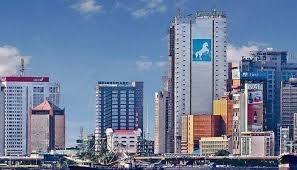For many Nigerians, the experience of banking in 2025 has become a relentless ordeal, with each transaction feeling like another cut in a long series of financial wounds. The sector, once hailed for its resilience, is now grappling with a perfect storm of economic challenges that have left customers and institutions alike in a constant state of adaptation and anxiety.
The macroeconomic environment remains deeply challenging. Nigerians are contending with unyielding inflation, high interest rates, and a naira that continues to weaken against major currencies. These factors have not only strained household budgets but have also made it increasingly difficult for businesses to access affordable credit. According to recent projections, credit losses in the banking sector are expected to remain elevated, hovering between 2.5% and 3.0% in 2025, as borrowers struggle to keep up with repayments amid currency depreciation and surging costs. In fact, foreign currency loans now account for about half of all loans issued by Nigerian banks, exposing the sector to even greater risks as the naira slides further.
The Central Bank of Nigeria’s (CBN) recent recapitalisation mandate has set the stage for a seismic shift in the industry. Banks are now racing to meet new minimum capital requirements—N500 billion for international banks, N200 billion for national banks, and N50 billion for regional banks—with a deadline looming in March 2026. This regulatory overhaul, reminiscent of the sector’s historic consolidation between 2004 and 2006, is expected to redefine competition and potentially force smaller banks into mergers or acquisitions just to survive. While the recapitalisation is aimed at strengthening the sector, it has also created uncertainty, with many smaller and non-interest banks scrambling for creative solutions to stay afloat.
Despite these pressures, Nigerian banks have demonstrated remarkable adaptability. Robust net interest income, driven by the high interest rate environment, is expected to keep profitability strong, with returns on equity projected between 20% and 25% in 2025. Digital transformation initiatives and fintech collaborations are also helping banks diversify their income streams and improve operational efficiency. The CBN’s Payment Systems Vision 2025 is pushing for greater digital adoption, aiming to close the financial inclusion gap and bring more Nigerians into the formal banking system.
However, the reality for the average customer is far from rosy. Persistent cash shortages, long queues at ATMs, and frequent network downtimes have become the norm. Many Nigerians recount stories of waiting hours just to withdraw their own money, only to be met with daily transaction limits or outright system failures. The situation reached a boiling point during the recent currency redesign exercise, when limited cash in circulation sparked protests and even forced some banks to close branches over security concerns. The frustration is palpable, with customers feeling squeezed by rising bank charges, hidden fees, and a general sense that their financial wellbeing is under constant threat.
Industry experts warn that the sector’s challenges are far from over. The risk of a drop in commodity prices, especially oil, could further destabilise the operating environment, while persistent inflation and interest rate hikes continue to erode both household and business confidence. While banks remain largely funded by customer deposits and are expected to maintain strong capitalisation, the sector’s vulnerability to global investor sentiment and foreign currency scarcity remains a significant concern.
In summary, banking in Nigeria today is a tough, often exasperating experience for ordinary citizens. While the sector’s resilience is undeniable, the cumulative effect of economic pressures, regulatory changes, and operational hiccups has left many feeling as though they are being slowly bled by a thousand tiny cuts—each one a reminder of the difficult road ahead for both banks and their customers.







